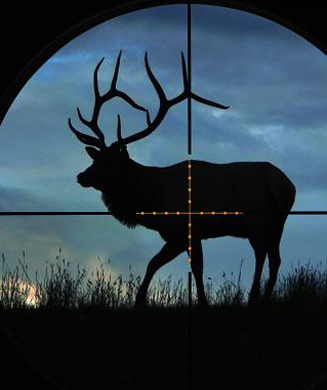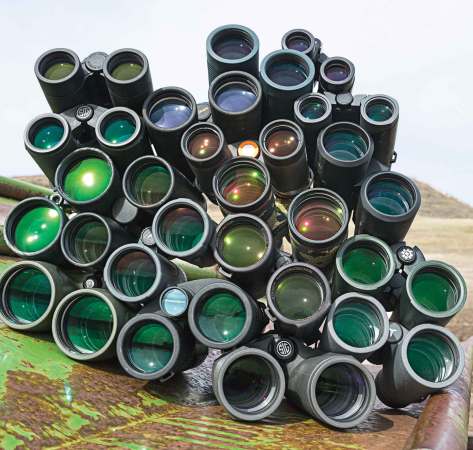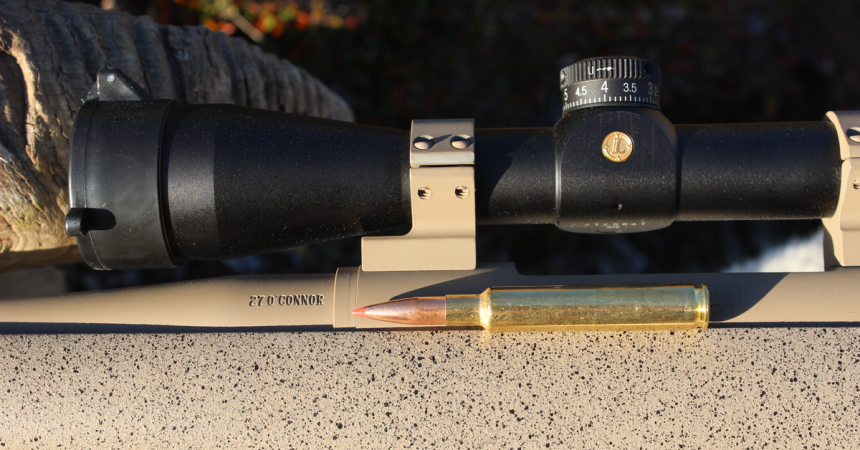We may earn revenue from the products available on this page and participate in affiliate programs. Learn More ›
The next time you go to buy a binocular or a riflescope, take a little penlight along. That simple tool will give you a good indication of whether an optic is worth the money, or whether it amounts to an overpriced tube of glass.
With a flashlight and a little know-how, you can learn a lot about lens coatings, how much stray light will distract you, even about how well you might be able to see through the optic in low light, which is exactly when most hunters rely on their binos and scopes.
Here’s what you do:
• Make sure your flashlight emits white light. I don’t care if it’s an LED or an incandescent bulb, it must shine white. No reds or greens. Don’t bring your 6-cell Maglite; a little finger-sized penlight is perfect.
• Focus the beam as tightly as you can, then holding the optic in one hand, shine the light down the objective lens. That’s the big part of the lens, for all you beginners. So if someone were using the optic to glass, you’d be shining the light right into their eyes.
• Move the light around so that you can see right down the tube. You should get reflections of greens, or violets or sometimes blues. You should never see white light reflected back at you. Colored reflections are an indication that the optic is fully multi-coated. If you get a white reflection, it’s almost guaranteed that at least one lens surface is uncoated. Why does that matter? Because coatings reduce reflection, but they also enhance contrast and boost light transmission. An uncoated optic will produce a thin, washed-out image, but you’ll also get halos and jags of light that are at best annoying and at worst so distracting that they can distort the image.
• Move your flashlight beam around so you can see the inside of the optic tube. See how black the interior is? That’s on purpose. The velvet black color and the concentric rings serve to absorb ambient so that the only light that reaches the eye is from the image you are viewing. Your flashlight will reveal scratches or spots on the interior where the blacking has flaked off. That’s a sign of poor manufacturing processes, and you’ll notice it in the field by streaks of light, halos and vignettes. They are all what I call NIFL, or non-image-forming light. And NILF is the enemy of bright, crisp optics.
• Lastly, shine your light right down the center of the tube. This takes some practice, but you can start to see individual lens elements. Are they clear and bright? Or are they dusty? Most modern optics manufacturing outfits are as clean and dust-free as an operating room, but every not and then you’ll see a lens surface that’s specked with dust. Those particles will reflect light when you’re hunting, and you’ll get more of that damnable NILF.
That’s it. Once you’ve practiced a few times, you’ll start to detect subtle differences in coatings, interior blacking, and other optical aberrations. And I’ll guarantee you that after a few minutes with your flashlight, you’ll know a lot more about the optic than the clerk on the other side of the counter.
To find our picks for the best new optics click the links below:
Rifle Scope Review: OL Ranks the Best Scopes of 2011
[Spotting Scope Reivew: OL Ranks the Best Spotting Scopes of 2011](/node/1001345873/Spotting Scope Reivew: OL Ranks the Best Spotting Scopes of 2011)
Binoculars Review: OL Ranks the Best New Binoculars of 2011
















